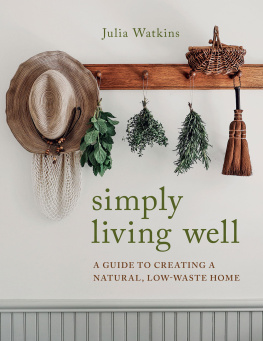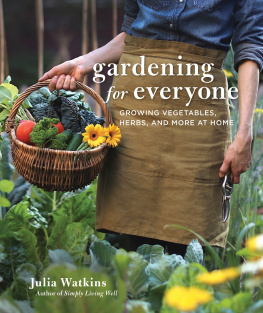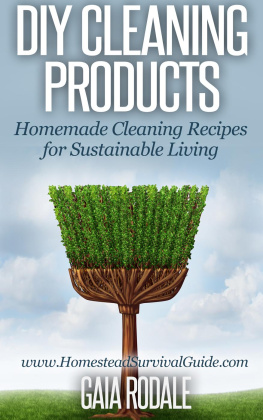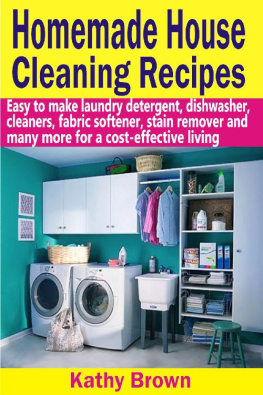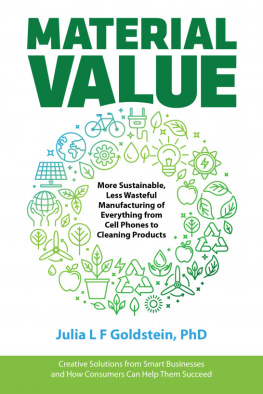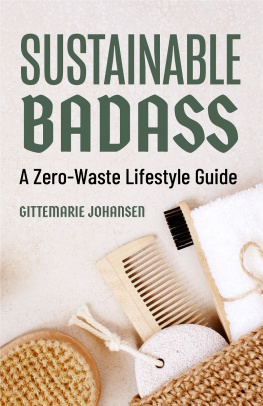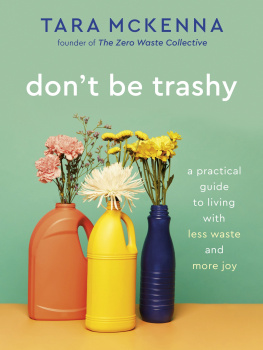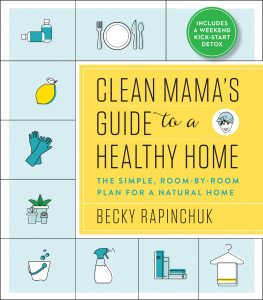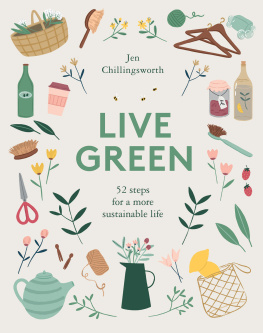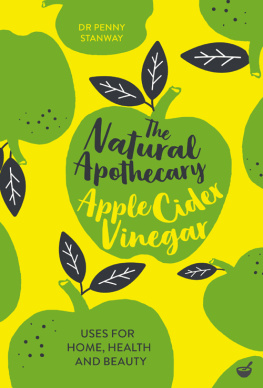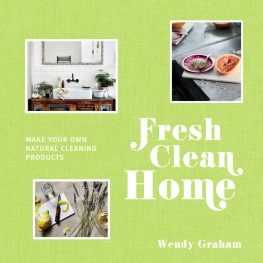Contents

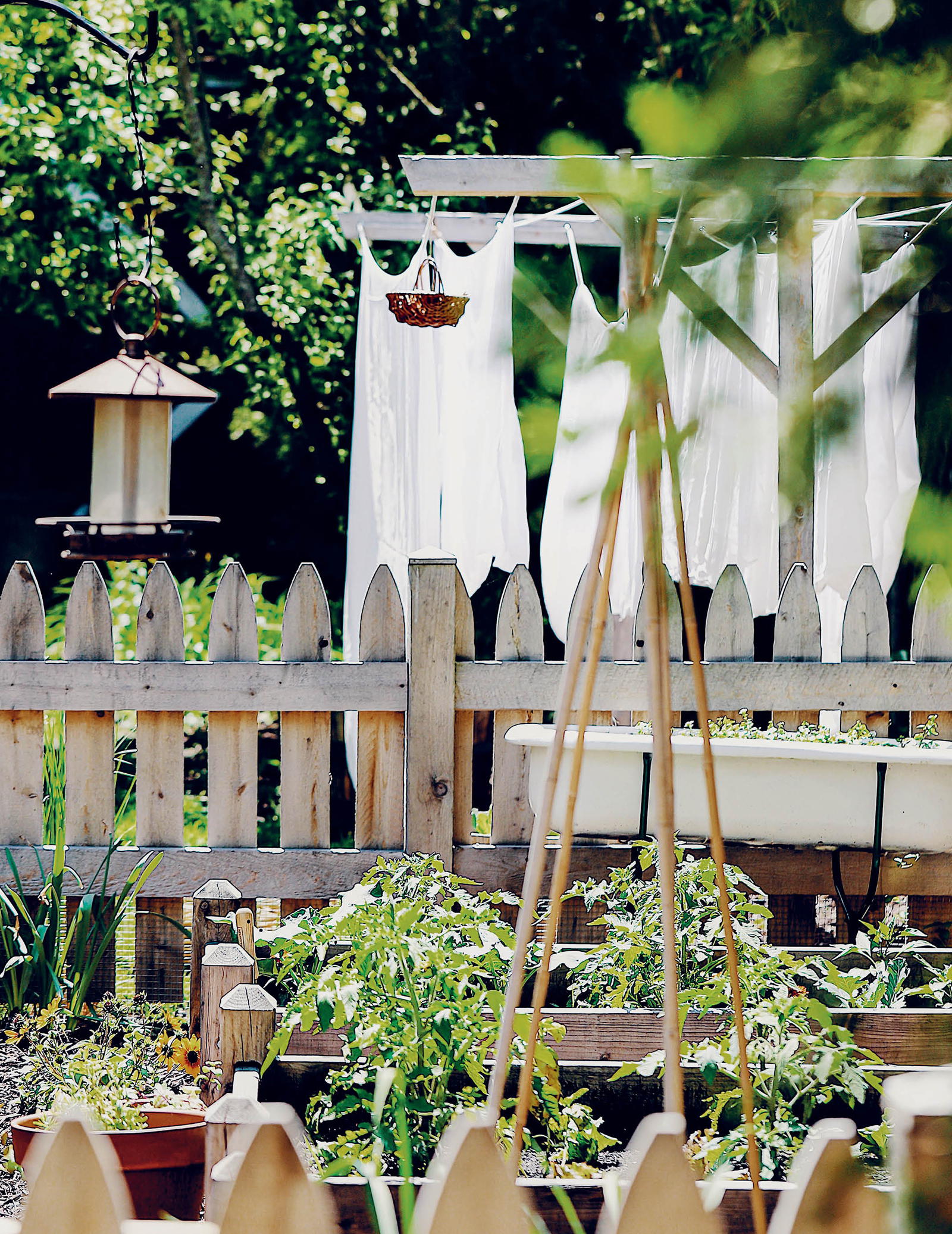
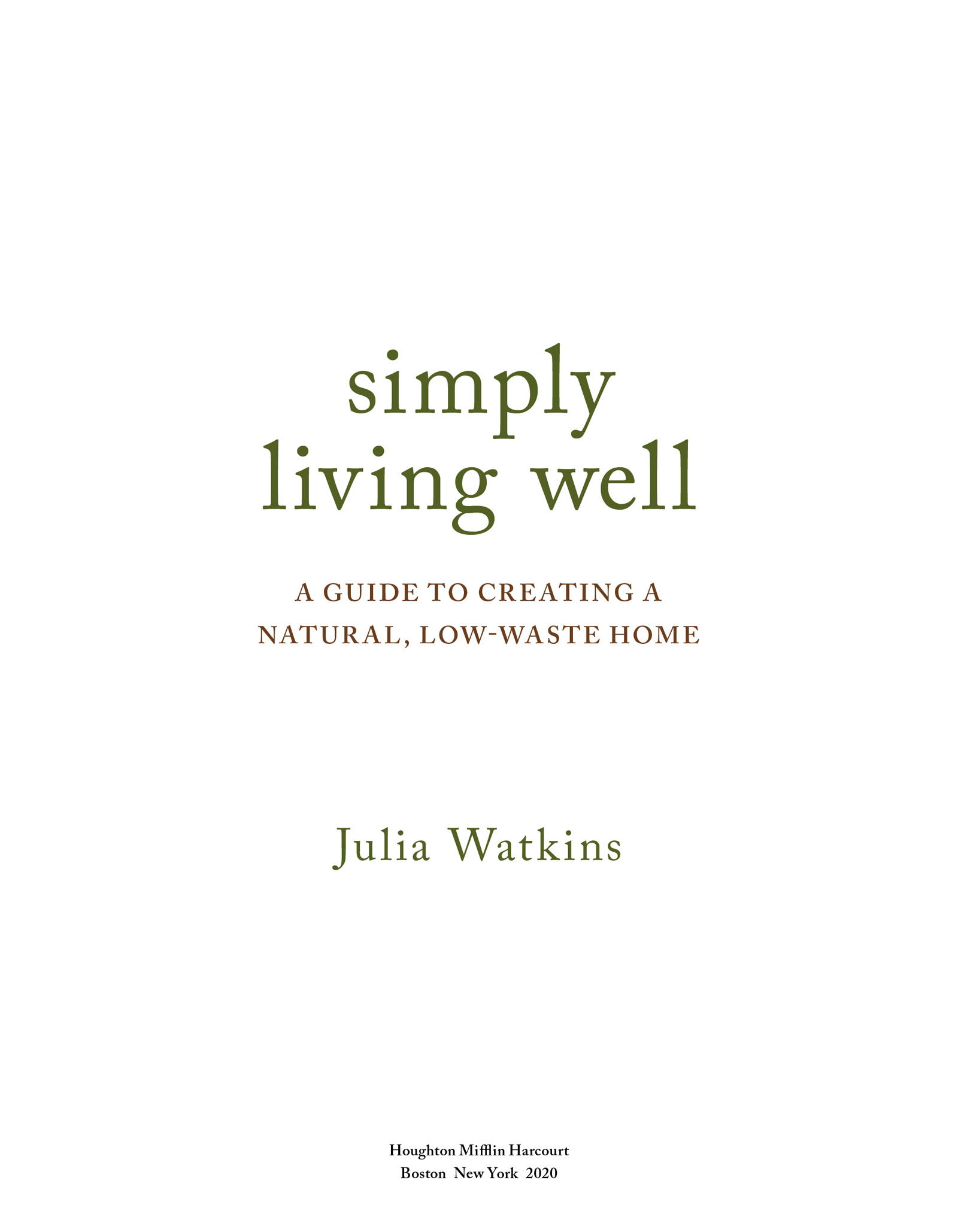
Copyright 2020 by Julia Watkins
All rights reserved
For information about permission to reproduce selections from this book, write to or to Permissions, Houghton Mifflin Harcourt Publishing Company, 3 Park Avenue, 19th Floor, New York, New York 10016.
hmhbooks.com
Library of Congress Cataloging-in-Publication Data
Names: Watkins, Julia, author.
Title: Simply living well : a guide to creating a natural, low-waste home / Julia Watkins.
Description: Boston : Houghton Mifflin Harcourt, 2020. | Includes bibliographical references and index. | Summary: Easy recipes, DIY projects, and other ideas for living a beautiful and low-waste life, from the expert behind @simply.living.well on Instagram Provided by publisher.
Identifiers: LCCN 2019045719 (print) | LCCN 2019045720 (ebook) | ISBN 9780358202189 (hardback) | ISBN 9780358192695 (ebook)
Subjects: LCSH: Home economics. | House cleaning. | Formulas, recipes, etc. | Waste minimization. | Kitchen gardens.
Classification: LCC TX158 .W37 2020 (print) | LCC TX158 (ebook) | DDC 640dc23
LC record available at https://lccn.loc.gov/2019045719
LC ebook record available at https://lccn.loc.gov/2019045720
Book and cover design by Ashley Lima
Line art by Kotkoa/Shutterstock (endpapers); Bodor Tivadar/Shutterstock (p. )
v1.0320
To my Granny Eloise and my Great Uncle Benand their very special namesakes
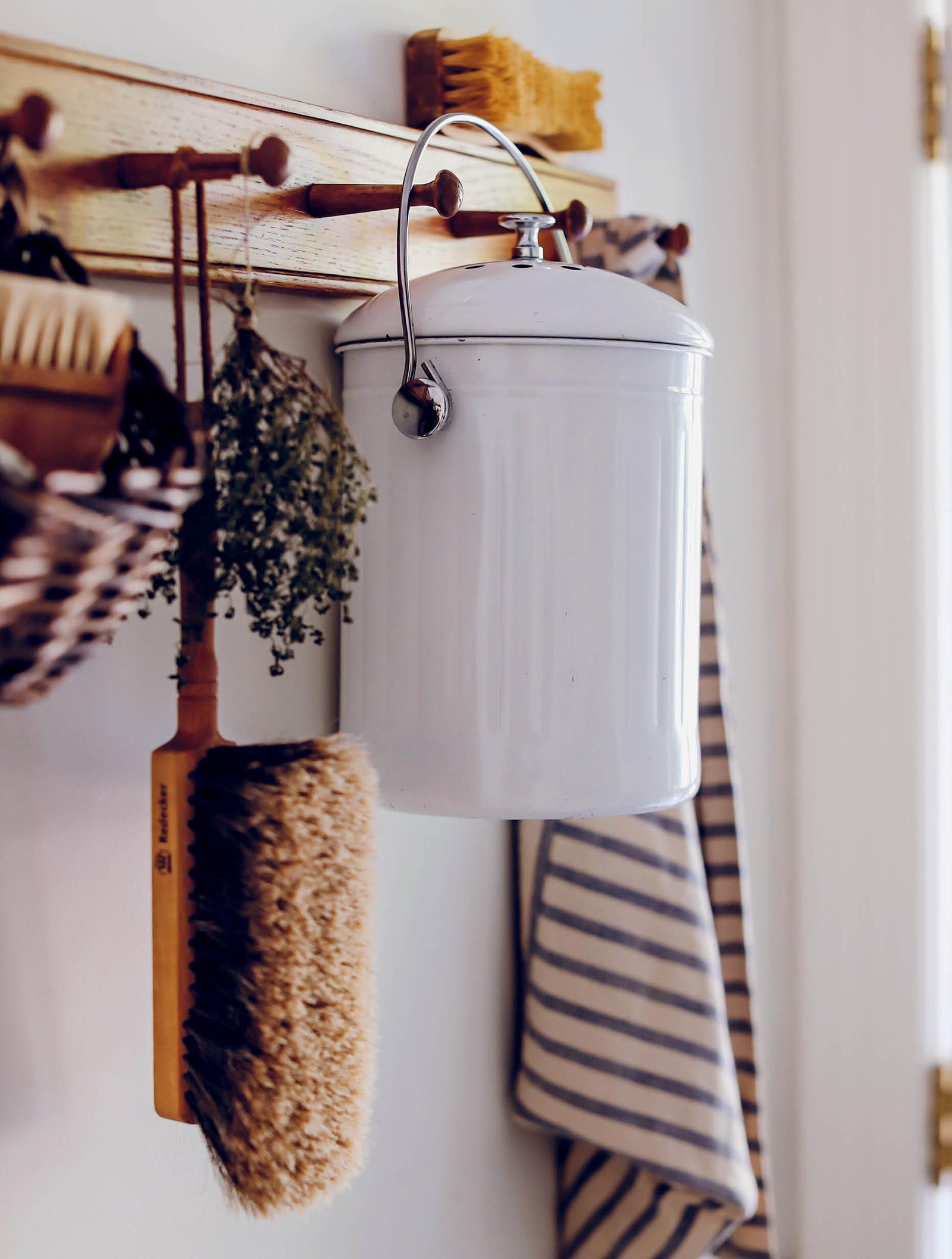
Contents
Projects and Recipes
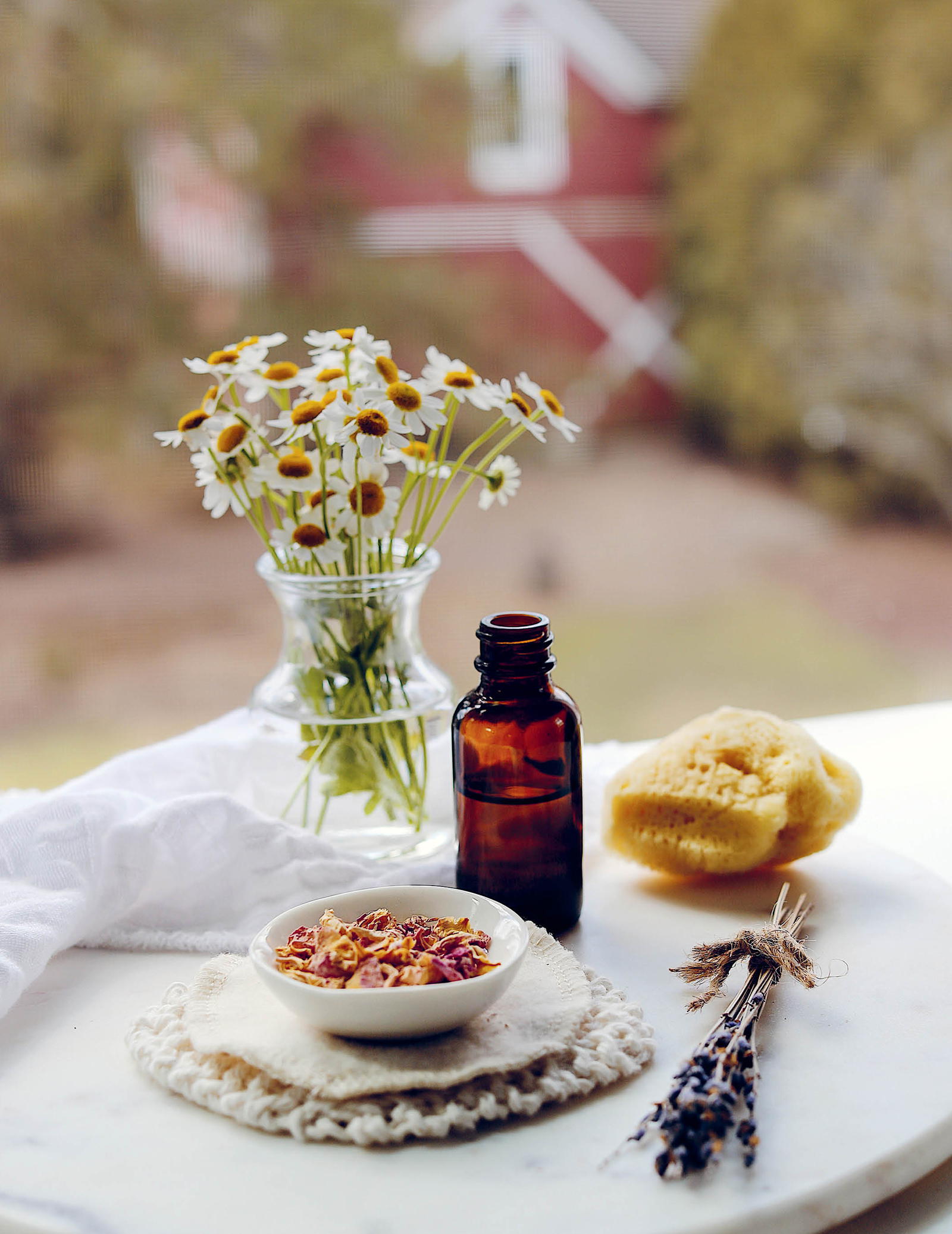
Introduction
I like to think this is a book your grandmother could have given you. Chock-full of tips, recipes, and remedies, this book is her hand held out, sharing what in her day felt ordinary but seems extraordinary today. Of course, she didnt write this bookshe lived it. As for me, I had to learn it first, then live it, and only then start to write it down, all while striving for a simple, slow, sustainable life in line with the principles of zero-waste.
If youre new to zero-waste, in a nutshell its a growing movement to reduce what you consume and throw away. Theres a bit of a misconception about what zero-waste means, with stories and photos of people fitting five years of trash in a pint-size jar. Whats often not shown is the long and arduous process of stumbling, experimenting, and learning that got them there. Zero-waste is a process, not an eventmuch more about trying for zero than being at zero. In fact, most proponents of zero-waste acknowledge that generating absolutely no waste is all but impossible. Instead, they recommend doing what makes sense for you and what you feel you can sustain, getting as close to zero as you can and followingin orderthe 5Rs of zero-waste: refuse, reduce, reuse, recycle, and rot (or compost).
Now, a word about recycling. Its by far the most common approach, but also the most misleading. If you were to peek into the average American kitchen or bathroom, youd be hard-pressed to find anything not wrapped with, bottled in, or made of plastic. What may surprise you is that only 9 percent of that plastic gets recycled, with the rest dumped in landfills, oceans, or incinerators, releasing harmful toxins into the environment. Unlike glass or metal, plastic cannot be recycled indefinitely. Instead, most plastics are downcycled a handful of times before becoming so degraded they cant be reused again. At that point, theres no choice but to throw them away. As materials go, plastic is cheap to make, easy to use, and often a real challenge to avoid. But minimizing your use of plastics, rather than relying on recycling, is one of the best ways to reduce your waste and your impact on the earth.
Fundamentally, starting your pursuit of zero-waste means looking carefully at how you consume and what kinds of waste that produces. Everyones different, but even a cursory audit of your consumption habits ought to reveal opportunities to cut back on waste.
It also sometimes helps to put your habits in a broader context, which to me means asking whether youre part of the linear economy or the circular economy. Most of our economy is still a linear economy, where resources are extracted, processed, consumed, and discarded. Take a paper coffee cuptheres a straight line running from a tree in the forest through the paper mill, the manufacturing plant, the coffee shop, your hand, the trash can, and a landfill.
Theres nothing sustainable about a linear economy. At some point, well either run out of trees or space in the landfill or both. And even where forests are replanted, most often were replacing old-growth forests and all their rich biodiversity with tree plantations that at best comprise just a few species of trees.
In a circular economy, were still extracting at least some of our resources, though with a bit more thought and a lot more care. For example, there are ways to manage certain types of resource extraction so they align more with natural cycles of regeneration. And once extracted, resources can be processed and utilized in a way that anticipates value in a product even after it has been used by a consumer, at which point it can be repurposed, reused, remanufactured, or otherwise refurbished. In a circular economy, we avoid creating waste (and minimize what little waste we do produce) by keeping things continually in use, in one form or another.
A great deal of the circular economy is accomplished by smarter designs, innovative materials, technological advances, and radically different business models. But theres a lotand I mean a lot you can do in your own home, often by looking back to a time when the demands of feeding a family of four were no different than they are today, but with no fancy supermarkets or big box stores down the road or fast and easy take-out or delivery options a phone call away.
This is why, for me, zero-waste has been about so much more than just avoiding trash or preventing waste. Its been about changing my mindset, developing an inner resourcefulness, and creating deep, meaningful connections to the natural world, my ancestors, my food, my health, and my community. The recipes and tips in this book reflect those values every bit as much as they offer ways for individuals to reduce their personal waste while demanding responsibility from businesses and governments.
My first encounter with zero-waste was in Africa, nearly twenty years ago. I was serving in the Peace Corps and living in a remote village in the West African country of Guinea. Rural, roadless, and entirely off the grid, life in my village was resolutely zero-wastemostly because there was so very little to waste in the first place. Practically everything was made by hand, often from materials drawn directly from the natural world. Manufactured goods that did find their way to the village, once theyd fulfilled their intended function, were repurposed and reused, usually until they had nearly disintegrated from so much wear and tear. Nothing, it seemed, was ever thrown away.
Zero-waste popped up again in my life about a decade later, not long after my first child was born. I found myself dealing with a litany of health issues, and to help me get better I turned to a wide range of holistic treatments. I sought to recover my health by following many of the same slow, simple rhythms of being and of making I had witnessed in Africa or remembered from my grandmothers kitchen. So many of the ideas, recipes, and remedies in this book reflect those old ways of living as much as they involve modern nutrition and natural medicines.

